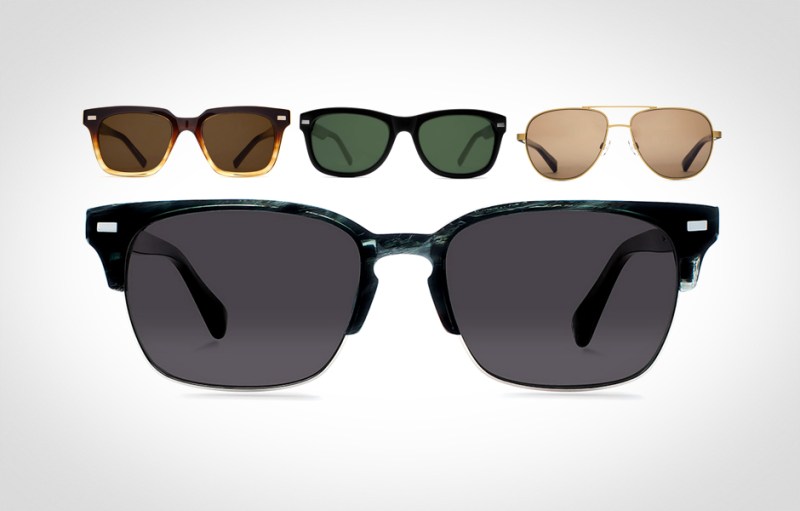
We’ve come a long, long, way since those early days—glass lenses, polarized lenses…UV-protection. These days, most medical professionals will tell you that sunglasses are a requirement for bright, sunny days, but they don’t tell you how to pick a pair that look good on your face. For that, we turned to Warby Parker founders Neil Blumenthal and David Gilboa, purveyors of quality, affordable, stylish and of course guilt-free shades, who gave us an exclusive interview on form and fit.
1—Before you even think about the way a pair of sunglasses looks, think about size. Sunglasses shouldn’t sit on your cheeks, and they should rest comfortably on the bridge of your nose. Make sure these two boxes are checked before you get to the aesthetic component. A good test? Put a pair on and smile. If the tops of your cheeks touch the bottom of the frames, they’re too big.
2— When it comes to picking frames that work for your face, think opposites. Square frames flatter round faces (round faces just have cheek bones are the widest part of the face). If you’re not comfortable with an ultra-angular pair, try a frame with a wider, structured brow.
4¬—For those with square faces (Defined jawline and your face is nearly as long as it is wide), round lenses take the edge off strong jaws and cheekbones.
5—Aviators tend to be the most universal and look good on most people.
6—Those with oval faces (forehead is slightly wider than your chin) are the lucky ones: they can wear almost any shape.
7—Figure out whether your face is on the wider or narrower side, because this will determine how large a frame you want. Frames that are too small will make a wide face look wider (and your features might look scrunched). Frames that are too big either give you a RoboCop vibe or make your whole head look small. As with so many things, it’s all about proportion.


